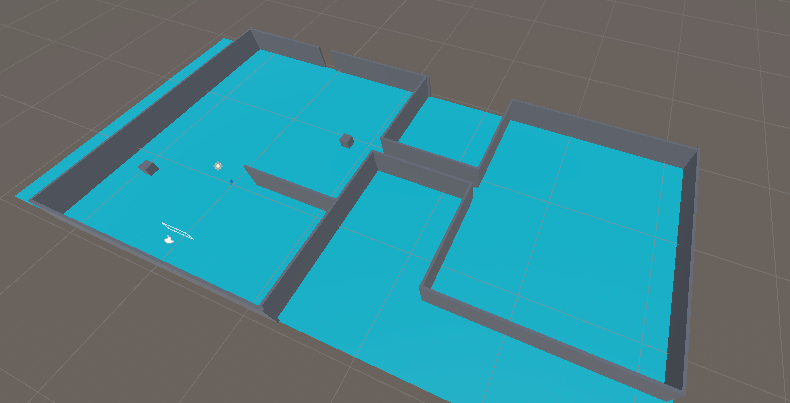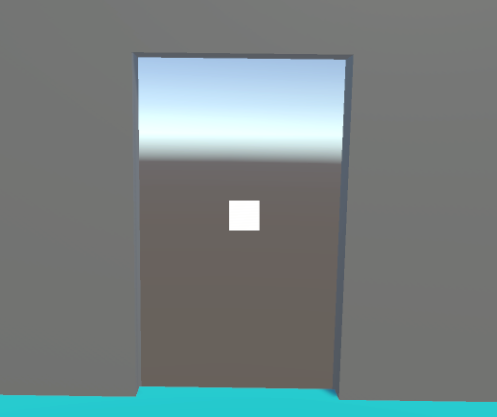Escape Room & Game Design Research:
Most escape rooms, both in the virtual and real world, follow the same standard formula in which you are locked in a room and must solve puzzles which then lead to new puzzles, until you finally escape (Sakal, 2019).
Whilst this structure is proven to work, game design principles and techniques can be applied to improve upon this. Escape rooms are similar in gameplay to puzzle-solving adventure games, and so applying game design techniques should come naturally (McClellan, 2018).
The typical structure for escape rooms is: find a locked box, solve a puzzle, get a code, unlock the box & repeat (McClellan, 2018). Since my prototype will only be a short tutorial level, the structure will be similar but without repeating the process at the end. The main aim of this game is to showcase what is possible with voice recognition in Virtual Reality, not creating a full escape room game.
A simple puzzle is a puzzle that can be solved without additional clues and should be something the user will instantly recognise (McClellan, 2018). Examples of these may include riddles or crossword puzzles. Contrastingly, complex puzzles require the user to combine multiple clues or objects to solve it (McClellan, 2018).
Game flow is a design technique which ensures that the challenge matches the player’s ability by creating a balance between difficulty and skill. Making the game too easy and the player tends to get bored, whilst if the game is too hard the player will become frustrated (Irajdoost, 2023).
By designing the game in a way which the player’s skill increase coincides with an increase in difficulty, they should stay fully engaged. Since this prototype is just a tutorial level, all of the puzzles being simple puzzles should be ok, however, if I took this game further and created multiple levels, having harder complex puzzles once the player is familiar with the mechanics would make sense.
Planning The Level:

KEY: GREEN = PLAYER SPAWN, RED = LOCKED DOOR
Now that I had researched escape room mechanics and how game design techniques can be applied to them, it was time to start creating a level.
I started by quickly sketching some rough layout ideas without much thought put into them, just to generate some potential ideas. Once I had six rough layouts, I began to think how each of them would work and which doors would be locked.

I chose my favourite design and began refining it and adding more details, such as where the teleportation points should be placed. This design was chosen due to its simplicity for a tutorial level. There is room for 2-3 different puzzles which will showcase the voice command mechanic, without being too complicated.
Whilst blocking out the level, the layout may change due to playtesting and iteration. Iterative game design is a proses in which a game is proposed, prototyped, playtested and reworked (Rouse, 2019). This process is often repeated multiple times before a final version. Therefore, although this layout will serve as a good starting point, it may change depending on playtesting feedback.
Issue Whilst Blocking Out:

I began by blocking out some walls to shape the level that I had previously sketched out. However, whilst testing the proportions within play mode, I noticed a major bug.
The reticle was turning green and acknowledging a teleportation point that was behind a wall. This was a big issue as it would allow players to teleport through walls – a game breaking bug. Furthermore, this could confuse players as the reticle is only supposed to turn green for interactable objects, not walls.

A raycast is an invisible line that detects if a specific object has been hit (Game Dev Beginner, 2022). In this case, I needed the raycast to detect the walls within the level and for the reticle to stay white if any walls are detected.
By changing all of the wall’s layermasks to “wallLayermask”, the bug was fixed and the reticle stayed white. Layermasks tell a raycast which objects it should register and which it should ignore (Game Dev Beginner, 2022).
The same system is used to turn the reticle green when the player looks at a teleportation point.
Continuing To Block Out:

Once the wall bug had been fixed, I finished off creating the boundary for the level. This may change throughout playtesting, but for now it was an exact copy of the level layout sketch.

Making sure the proportions of everything feel correct is a huge part of blocking out. By using Quest Link, I am able to immediately playtest the level and feel if any proportions of walls or doors feel wrong. By using a general guide to video game wall and door measurements, I was able to quickly create a rough blockout and then adjust these values slightly if they felt too big or small (WorldofLevelDesign, 2023).
References:
- Chak, A. (2020) Escape Rooms and Game Design. 12 March. Available online: https://www.linkedin.com/pulse/escape-rooms-game-design-aaron-chak [Accessed 19/12/2023].
- Game Dev Beginner (2022) Raycasts in Unity (made easy) [Video]. Available online: https://www.youtube.com/watch?v=B34iq4O5ZYI&t=324s [Accessed 12/12/2023].
- Irajdoost, I. (2023) Mastering Game Flow : The Fine Balance between Boredom and Anxiety. 23 May. Available online: https://www.linkedin.com/pulse/mastering-game-flow-fine-balance-between-boredom-iman-irajdoost#:~:text=In%20game%20design%2C%20it%20translates,player%20in%20the%20flow%20channel [Accessed 19/12/2023].
- McClellan, G. (2018) Designing game play for escape rooms using video game design techniques. Game Developer, Internet edition. 8 January. Available online: https://www.gamedeveloper.com/design/designing-game-play-for-escape-rooms-using-video-game-design-techniques [Accessed 18/12/2023].
- Rouse, M. (2019) Iterative Game Design. Techopedia, Internet edition. 11 June. Available online: https://www.techopedia.com/definition/27045/iterative-game-design [Accessed 20/12/2023].
- Sakal, J. (2019) Mechanics & Game Play: Changing the Game Part 2 of 3 [Blog post]. Cross Roads Escape Games. 29 April. Available online: https://crossroadsescapegames.com/the-hex-room/mechanics-game-play/#:~:text=Basically%2C%20your%20group%20will%20be,way%20to%20escape%20the%20room [Accessed 18/12/2023].
- WorldofLevelDesign (2023) UE5: Complete Guide to Player Scale, Environment Dimensions and Creating to Proportions [Video]. Available online: https://www.youtube.com/watch?v=Is_68PZ-M5M&t=1201s [Accessed 20/12/2023].